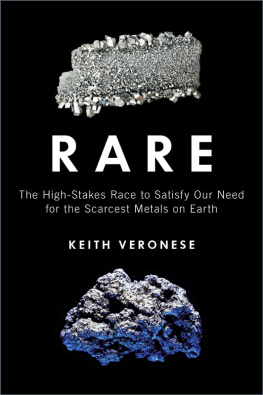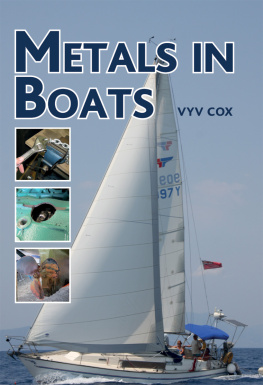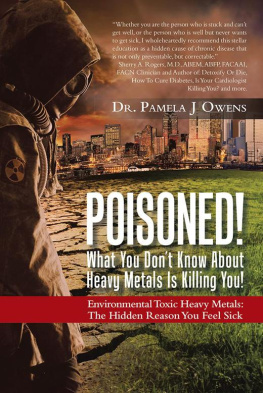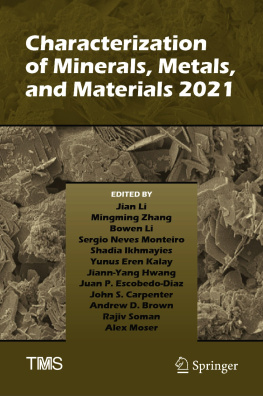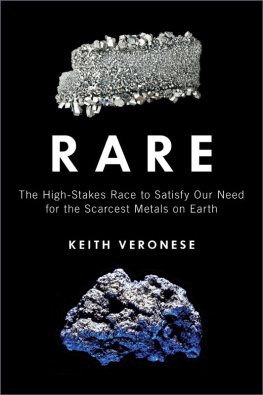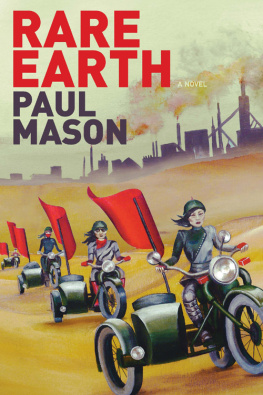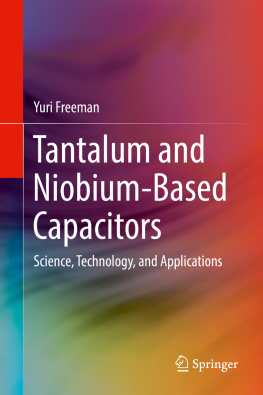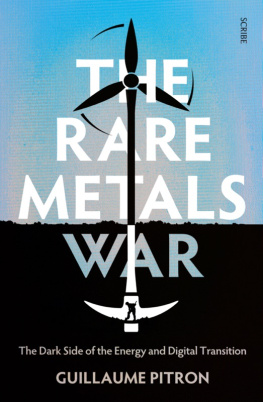
Thanks first to my wife for her love, friendship, dedication, and ongoing supportshe often believes in me more than I do in myself. Thanks as well to my twin daughters. The pair spent many an hour on my arms and in front of a laptop during their first several weeks of life as I finished this book. I will cherish those moments until I have no more memories left.
My gratitude goes out to my mother for her sacrifices and steadfastness, as well as my family and friends for their many efforts in my life and ongoing encouragement. Thanks in particular to Tripp Reynolds for making me talk about the book early in the morning when I was not exactly ready to. You kept me on my toes. I would also like to thank Laurie Norton, Wayne Garrett, and the other educators I came in contact with that guided me, intentionally or not, in this direction.
I wish to extend my appreciation to Laura Wood at FinePrint Literary Management for her perseverance and the effort she expelled, as well as Steven L. Mitchell at Prometheus Books for taking a chance on yet another author early in his career. I would also like to thank Julia DeGraf, Catherine Roberts-Abel, Brian McMahon, Meghan Quinn, Jade Zora Scibilia, Nicole Sommer-Lecht, Melissa Ra Shofner, Mark Hall, Lisa Michalski, and the rest of the good people at Prometheus Books for their assistance in editing, designing, and promoting Rare. If you are still reading the book at this point, thanks to you well.


Photo by Carla Patton Veronese
KEITH VERONESE holds a PhD in chemistry and has written for Gawker Media extensively, particularly for its science site io9. He has also written for Alpha Brand Media's family of websites and in magazines published by TwoMorrows Publishing. He is the author of Plugged In! Comics Professionals Working in the Video Game Industry.

MAN AND METAL
We are surrounded by a cacophony of metals. Aluminum cans store sweet, caffeine-filled beverages that give an afternoon boost. Iron support structures weave throughout every modern building, and our pockets jingle with nickel and copper coins. The rare metals gold and platinum may be a little less common in our day-to-day lives, but they play important roles in electronics, internal combustion engines, and, of course, jewelry. In the past three decades, industrial needs have led to the use of a number of lesser known, rare metals to advance consumer electronics, health care, communications, and the defense industry.
These new metals are often fugitives from the bottom rows of the periodic tablemetals with names like niobium, tantalum, and rhodium. These elements were likely overlooked in your high school or college chemistry class, but they play a litany of roles in the technological growth of society, as engineers, chemists, and physicists push the boundaries of the exciting and possible.
Humankind's past is littered with methods of using metals to fashion weapons and tools, with the earliest notations appearing six thousand years ago. While metals may vary in scarcity, this brotherhood shares a number of basic characteristics: they are overwhelmingly malleable and act as superb-quality conductors of electrons, for example. Our word metal derives from the Greek word metallon. The word loosely translates to quarry or mine and was often used in reference to bustling gold- and silver mining operations in ancient Greece. This is quite the adequate name, one defined by its source, with metals often requiring a phenomenal amount of work to pry from Earth's grip.
Scientifically, metals are known for a common set of properties. Almost all metals have the ability to transmit electricity and heatvery useful properties in the world of electronics. Most metals can be easily bent and molded into intricate shapes. As a nice bonus, most metals are resistant to all but the most extreme chemical reactions in the outside environment, with the added stability increasing their usefulness. A very apparent exception to this stability, however, is the rusting of iron, a natural process that occurs as iron is exposed to oxygen and water over time in junkyards, barns, and elsewhere.
Is a particular metal hard to find because there is a limited amount, is it simply difficult to retrieve, or does technological demand outpace supply? The acquisition difficulty is likely due to a combination of all these reasons with a dash of nostalgic value to top things off for good measure, particularly for rare metals like gold and platinum that have served as status symbols for thousands of years.
ONE IN A BILLION
Determining a definitive amount of an individual element is a tricky endeavor. If you dive into a physics textbook, you are greeted with estimates of percentage makeup of the universe, solar system, and galaxy by element. If humankind has yet to set foot on Mars, how do we have any idea what percentage of elements make up other galaxies? These estimates are made through a combination of techniques and theories taken from physics, chemistry, and astronomy, relying on high-tech instrumentation to obtain dataafter all, several-hundred-million-dollar telescopes are not just for pretty pictures. By looking for fluctuations in the way light bounces back based on what is known regarding how individual atoms of a given element reflect light, rudimentary abundance estimates are made.
Measuring the amount of a given metal on Earth is bit easier but is still an astounding feat. The abundance of metals within the planet's crust is often reported in arcane parts per notation. These parts-per-million (and often parts-per-billion) values are attained through painstaking analysis of large amounts of rocks taken from the earth's crust. Ideally, they represent an average amount should all the metals be uniformly distributed throughout the planetwhich, as we know, they are not.
Parts per million (or billion), when used without any context, is a horribly obscure measurement that plagued my afternoons spent in Analytical Chemistry Lab. A notation traditionally used to communicate the amount of a contaminant within water or air, parts per million takes a very tiny amount and casts it against a reasonable background. Due to its nature, parts per is a dimensionless measurementit lacks units. These measurements describe a quantity, but not in relation to a known commodity as measurements like fifty miles per hour, ten feet, or one hundred kilometers do.
Thanks to its analytical anonymity, a parts per measurement can be used to describe just about anything. By the time you finish the end of this sentence, you have used about two parts per billion of your lifeabout four and a half seconds of the average human life-span. This sort of measurement is a great way to obscure the factsa local newscast might state there are three parts per billion of a toxic chemical like lead in the water supply. This is also the way the amount of rare earth metals is often reported. For example, platinum, a scarce, precious metal, exists in four parts per billion of Earth's crustonly four out of a billion atoms within the crust are platinum. This is an extremely small amount. To put the amount of platinum on Earth in an easier-to-visualize light, imagine if one took all the platinum mined in the past several decades and melted it down; the amount of molten platinum would barely fill the average home swimming pool.
Next page
